Students looking for the Bridges in Mathematics Kindergarten Home Connections Answer Key Unit 6 Three-Dimensional Shapes can find a better approach to solve the problems.
Bridges in Mathematics Kindergarten Home Connections Answer Key Unit 6
Bridges in Mathematics Kindergarten Home Connections Unit 6 Module 1 Session 2 Answer Key
Search for Spheres
Note to Families
At school, your child has been learning about spheres. Go on a search for objects in your house that are spheres (for example, a basketball or an orange) and count how many spheres you find.
Instructions
Spheres are all around us! Search around your house for objects that are spheres (for example, a basketball). How many can you find?
Question 1.
In the table below, write the name of each sphere and how many you find.
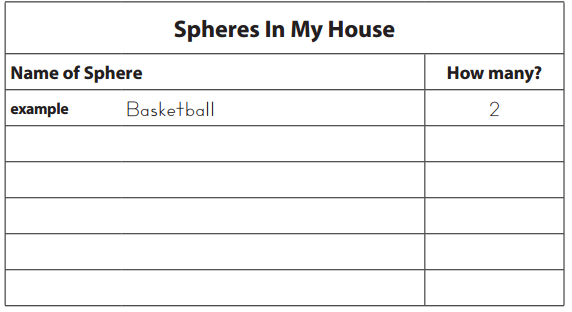
Answer:

Explanation:
The above example mentioned are some of the spheres in my house.
Question 2.
How many different kinds of spheres did you find in your house?
Answer:
Five different kinds of spheres are found in my house.
Question 3.
CHALLENGE Miguel found 6 spheres in his room. He found 5 more spheres in the kitchen. How many spheres did he find in all? In the space below, show how you solve this problem.
Answer:
Miguel found 6 spheres in his room.
He found 5 more spheres in the kitchen.
Add 6 spheres with 5 spheres.
6 + 5 = 11
Miguel found total 11 spheres in his house.
Question 4.
Use crayons or colored pencils to color in just the spheres.
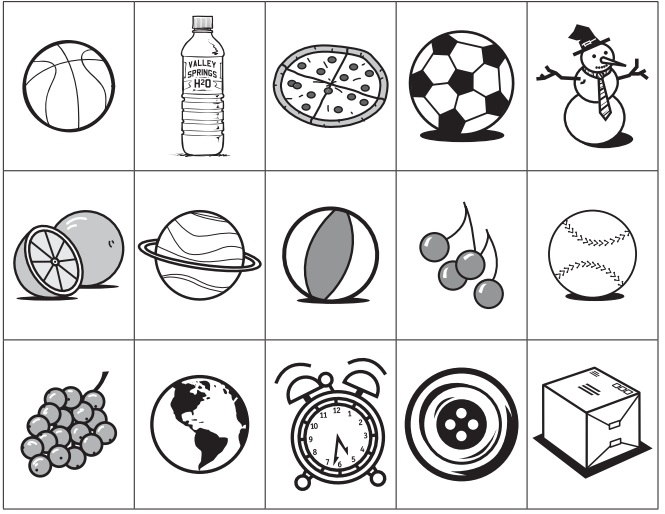
Answer:

Explanation:
In the above image we can observe all spheres are colored.
Question 5.
How many pictures of spheres did you color in?
Answer:
Seven pictures of spheres are colored.
Question 6.
CHALLENGE Which pictures could you combine to show 20 spheres?
Answer:
Bridges in Mathematics Kindergarten Home Connections Unit 6 Module 1 Session 5 Answer Key
Cylinders & Spheres Race to Twenty
Note to Families
As you play this game, use the words cylinder and sphere to help your child learn them. Talk about and count how many have been filled in, and remind your child that the heavy black marks indicate five spaces, making it easier to count on from 5 or 10.
Materials
- Cylinders & Squares Race to Twenty
- 4 crayons in different colors
- paperclip and pencil (to be used as a spinner)
Instructions
1. Decide who will play for cylinders (the ones shaped like a can) and who will play for spheres (the ones shaped like a ball), and pick two crayons each.
2. On your turn, spin the spinner and color in that many of your shape on your number line. (If you spin 3, color 3 of your shape.)
3. Switch colors on each turn so you can easily see how many you are adding together. Note Sometimes kindergartners will roll a 3 and color in 3 shapes, and then, if they roll a 5 on their next turn, they will color in 2 more for a total of 5. Instead, make sure the player who rolls a 5 colors in 5 more on that turn. Once they get past 5 or 6 filled in, this won’t be an issue.
4. As you play, talk about who has more and who has less; how many more or less, and how you know.
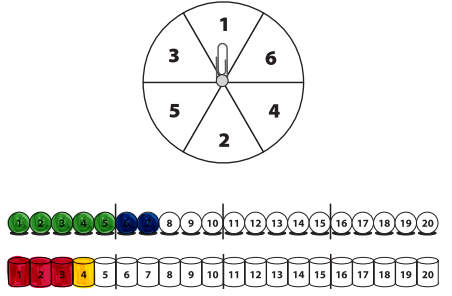
Parent: How many cylinders are colored in?
Child: Four.
Parent: How do you know?
Child: Three and 1 more is 4.
Parent: Great. How many spheres are colored in?
Child: Seven… there are 5 and then 6, 7.
Parent: All right. So who has more shapes colored in?
Child: You do. You have 7 and I only have 4.
Parent: How many more do I have?
Child: Let’s see… 1, 2, 3 (counting the extras)—you have 3 more.
As you get farther along the number line, you can ask, “How many more to get to 20?”
5. Continue taking turns until all the shapes on one player’s number line have been filled in. You need to land on 20 exactly.
6. CHALLENGE Say or write an equation each time you color more shapes. For example, if you had 4 shapes colored and then color 5 more on your next turn, say or write 4 + 5 = 9.
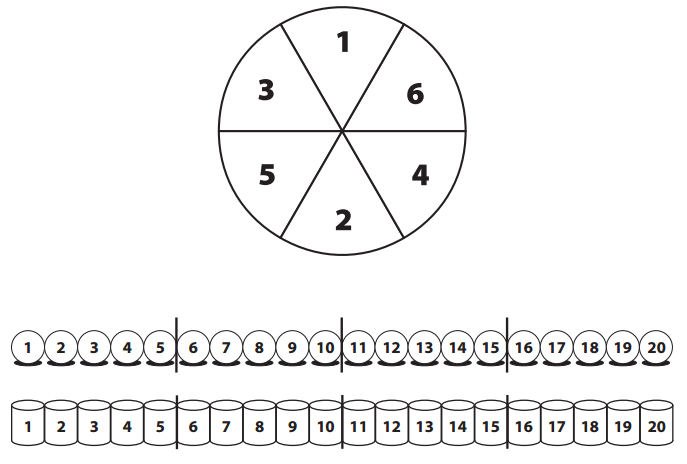
Answer:
Bridges in Mathematics Kindergarten Home Connections Unit 6 Module 2 Session 2 Answer Key
Shape Bingo
Materials
- Shape Bingo
- envelope to save the cards
- game markers (pennies, dry beans, small pieces of paper, etc.)
- scissors
Instructions
1. Cut apart the two bingo boards on page 3 and the cards on page 4, and get some game markers for you and your partner.
2. Mix up the cards and put them in the envelope.
3. Pull out one card at a time. What does the card show? Do you or your partner have a shape on your game boards that matches the card?
4. If you or your partner have that shape, cover it with a game marker. Cover only one shape on each turn, even if there are several shapes that match the attribute card.
5. The first person to cover three shapes in a row in any direction is the winner.
6. Save the cards and play again this week.
7. Complete the worksheet on page 2 and return it to your teacher.
Match the shapes.
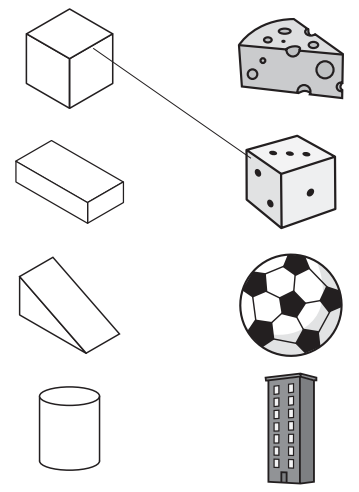
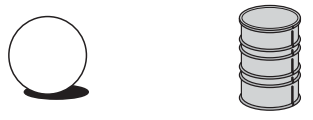
Answer:
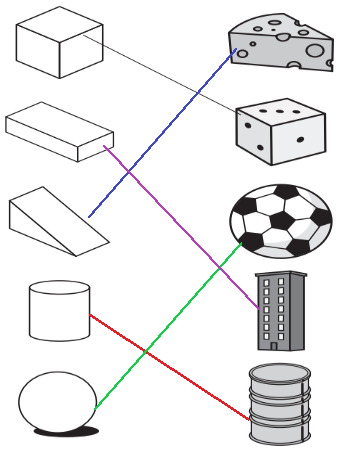
Explanation:
The given shapes are matched with related shape as we can observe in the above image.
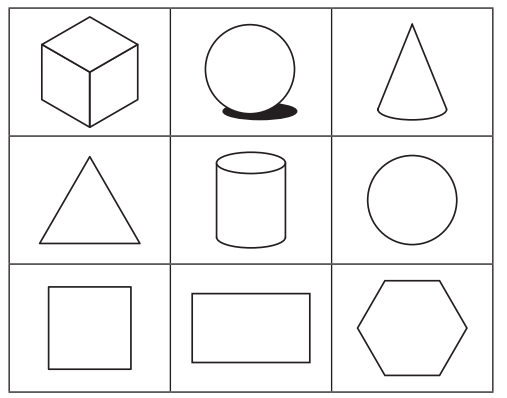
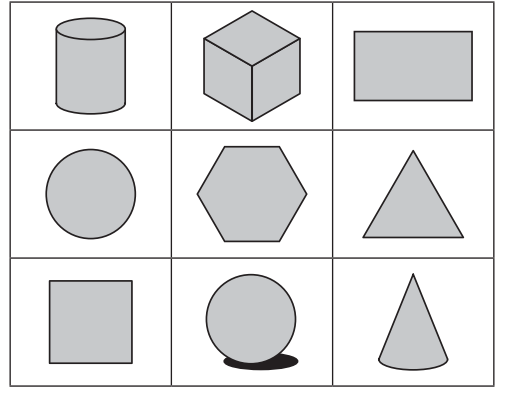
Answer:
Attribute Cards

Bridges in Mathematics Kindergarten Home Connections Unit 6 Module 2 Session 5 Answer Key
Shapes & Spinners Graphing
Note to Families
In this activity, which we have been playing in school, your child can practice identifying and drawing shapes, as well as making a graph.

Materials
- Shapes & Spinners Graphing
- paperclip and pencil for use as a spinner
Instructions
1. Use one record sheet (pages 3 and 4) each time you play.
2. Spin the shapes spinner on page 2. What shape did you land on?
3. Find that shape on your graph and trace it in the first box at the bottom of the column.
4. Keep spinning and drawing until one column is filled to the top. Which shape won?
5. Compare it with the other columns. When you do another graph, do you think that same shape will win again?
6. Play again on the second record sheet sometime this week.
7. CHALLENGE
- Keep playing until you have a first, second, and third place winner. Write 1st, 2nd, and 3rd at the tops of those columns.
- When you are done, compare the columns. Write statements to compare two columns. (For example, if you have 3 in the squares column and 4 in the hexagons column, write 3 < 4 and 4 > 3 on your paper.) Try it again with two different columns.
- When you are done, add up two of the columns. Write the equation on your paper. Try it again with different columns.
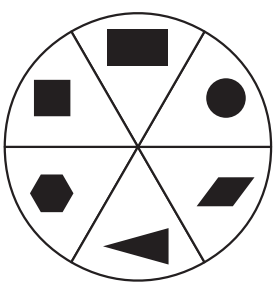
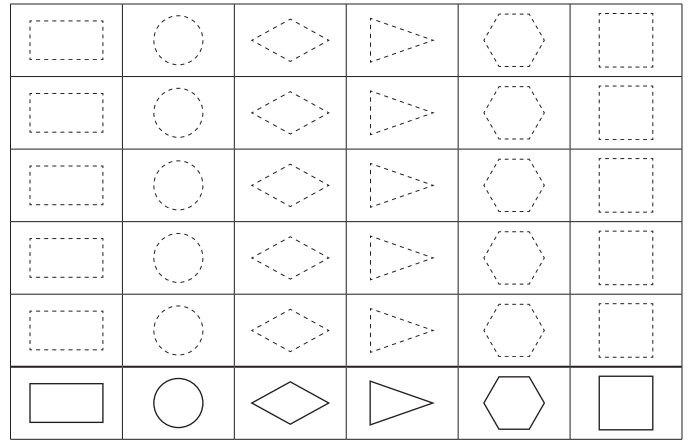

Bridges in Mathematics Kindergarten Home Connections Unit 6 Module 3 Session 2 Answer Key
How Many More to Five?
Fill in the equations.

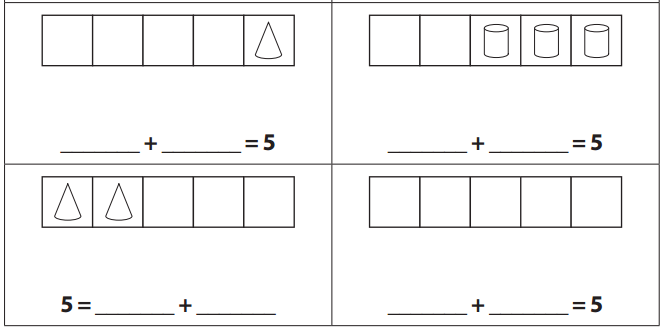
Answer:
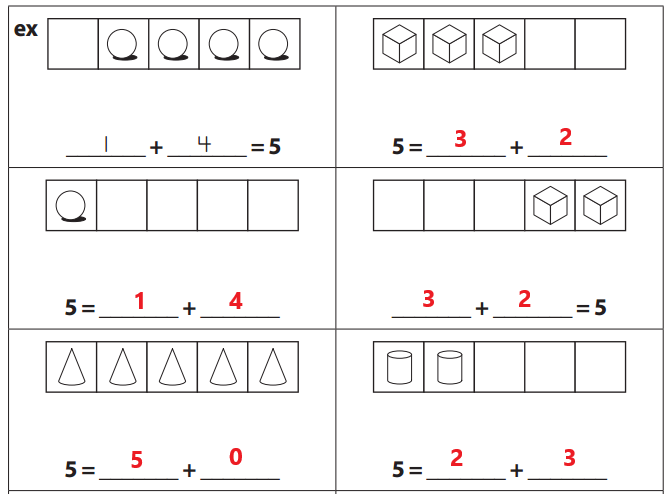

Explanation:
The given equations are filled with related numbers as we can observe in the above image.
CHALLENGE. Fill in the equations. How many more to 10?
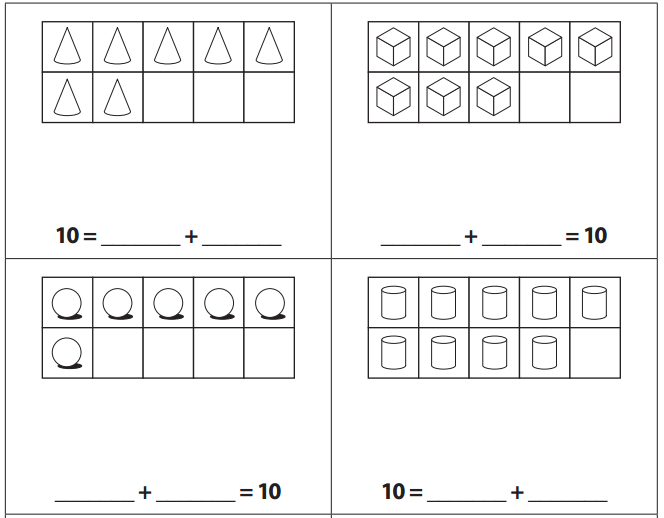
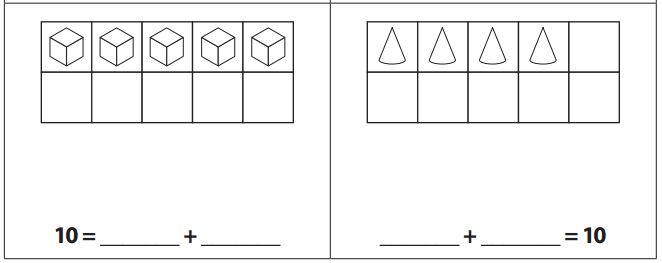
Answer:


Explanation:
The given equations are filled with related numbers as we can observe in the above image.
Bridges in Mathematics Kindergarten Home Connections Unit 6 Module 3 Session 5 Answer Key
Ten & More Bingo
Note to Families
When you’re playing bingo with your child, encourage counting the cubes on the cards in different ways (by 10s and 1s, by 10s and 5s and 1s, and simply by 1s). It takes some students many times of counting by 1s to really trust that there are 10 in the row.
Materials
- Ten & More Bingo
- game markers (pennies, dry beans, pieces of cereal, etc.)
- an envelope for storing the cards
Instructions
1. Cut apart the cards on pages 2 and 3 and put them in an envelope.
2. Cut apart the bingo boards on page 4 and give one to each player.
3. Cover the “FREE” spot on each board with a game marker.
4. Take turns reaching into the envelope for a card.
- How many cubes are on the card?
- How did you count them?
- Is there another way to count them?
5. Both players cover the number on their bingo boards.
6. The first player to get four in a row in any direction wins the game.
7. Play the game several times this week.
8. CHALLENGE
- Play to “blackout”—that’s when the entire board is covered.
- Write equations for the different ways you can count the cubes on a card. For example, for a card that shows 16, you could write “16 = 10 + 1 + 1 + 1 + 1 + 1 + 1,” or “10 + 5 + 1 = 16,” or “10 + 6 = 16,” and so on.
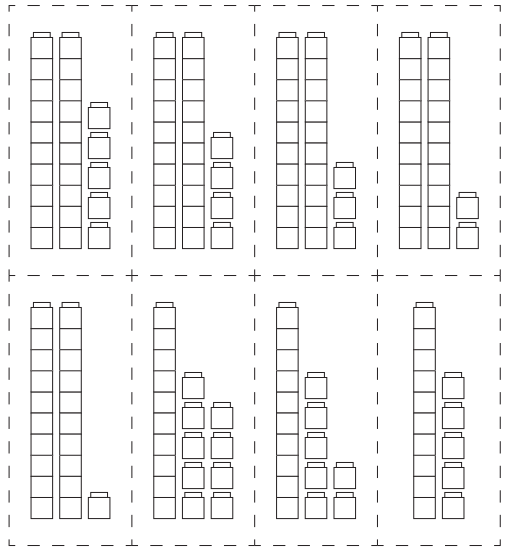
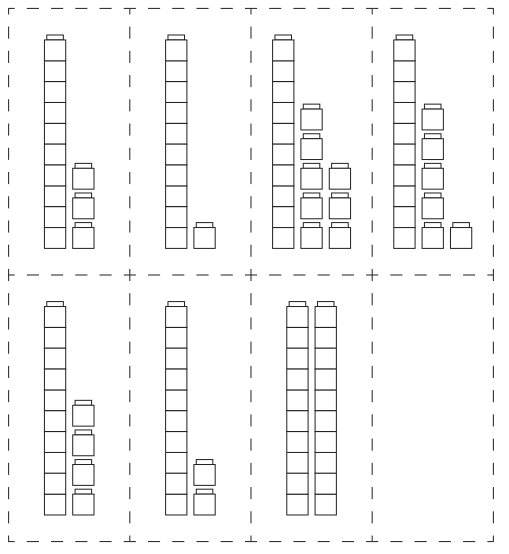


Bridges in Mathematics Kindergarten Home Connections Unit 6 Module 4 Session 2 Answer Key
Race You to 20¢
Note to Families
Be sure to save this game board — you’ll be using it again in the next Home Connection.
Materials
- Race You to 20¢
- 40 pennies (or any other small item) for 2 players to share
- paperclip and pencil (for use as a spinner)
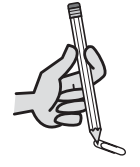
Instructions
1. Decide which side of the game board (page 3) each player will use and who will go first.
2. Take turns spinning the spinner and collecting that number of pennies. If you land on a nickel, you get to collect 5 pennies.
3. Set the pennies into the boxes on your side of the game board.
4. Be sure to wait until one player has finished a turn before spinning again.
5. Count and compare pennies after each round.
- Who has more pennies?
- How many more?
- How much would the other player need to catch up?
- How many more pennies until each player has 10¢? 15¢? 20¢?
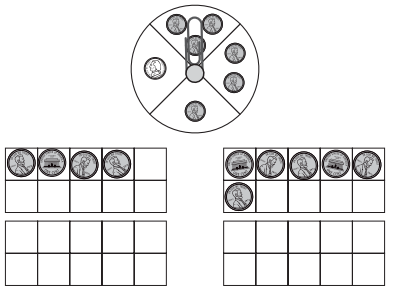
6. To win, a player must have exactly 20¢. If you spin more than you need, you must wait until your next turn to spin again.
7. Play the game several times this week.
8. Complete the What Comes Next? worksheet on page 4 and return it to your teacher. Note Save the game board and pennies for the next Home Connection.
9. CHALLENGE
- Write equations that show the amount you have and the amount you still need. For example, for the game shown above, the player on the left would write 4 + 16 = 20 and the player on the right would write 6 + 14 = 20.
- Write “greater than” and “less than” statements to compare the amounts of the two players. For example, for the game shown above, the statements would be 4 < 6 and 6 > 4.
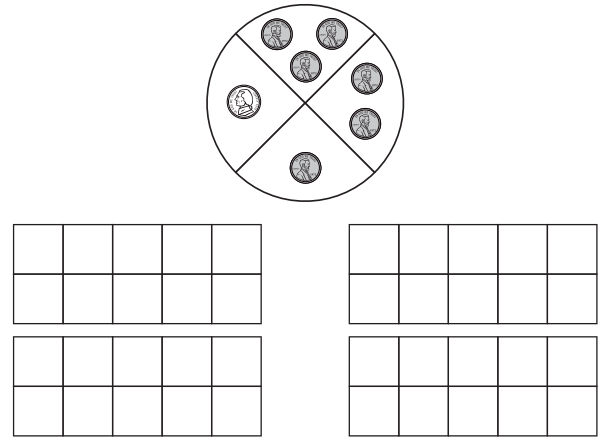
What Comes Next?
Write the number that comes next when you are counting.

Answer:

Explanation:
The number that comes next when I am counting are written in the table as we can observe in the above image.
Challenge
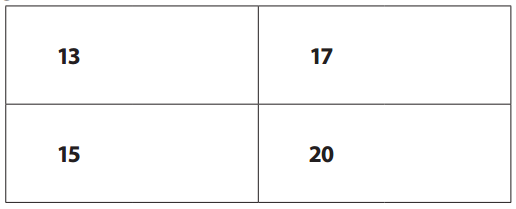
Answer:

Explanation:
The number that comes next when I am counting are written in the table as we can observe in the above image.
Bridges in Mathematics Kindergarten Home Connections Unit 6 Module 4 Session 5 Answer Key
Race You to Zero
Materials
- Race You to Zero
- Race You to 20¢ game board (saved from the last Home Connection)
- 40 pennies (or any small item) for 2 players to share
- paperclip and pencil (for use as a spinner)

Instructions
1. Set 20 pennies on each player’s side of the Race You to 20¢ game board to begin the game.
2. Take turns spinning the spinner and removing that number of pennies from your side of the board. If you land on a nickel, you get to remove 5 pennies.
3. Be sure to wait until one player has finished a turn before spinning again.
4. Count and compare pennies after each round.
- Who has fewer pennies?
- How many fewer?
- How many pennies still need to be taken away before each player reaches 0?

5. To win, a player must have exactly 0. If you spin more than you need to take away, you must wait until your next turn to spin again.
6. Play the game several times this week.
7. Complete the What Comes Before? worksheet on page 3 and return it to your teacher.
8. CHALLENGE
- Write equations that show the amount of pennies you still have and the amount you have removed. For example, for the game shown above, the player on the left would write 17 + 3 = 20 and the player on the right would write 15 + 5 = 20.
- Write “greater than” and “less than” statements to compare the amounts of the two players. For example, for the game shown above, the statements would be 17 > 15 and 15 < 17.
What Comes Before?
Write the number that comes before when you are counting.
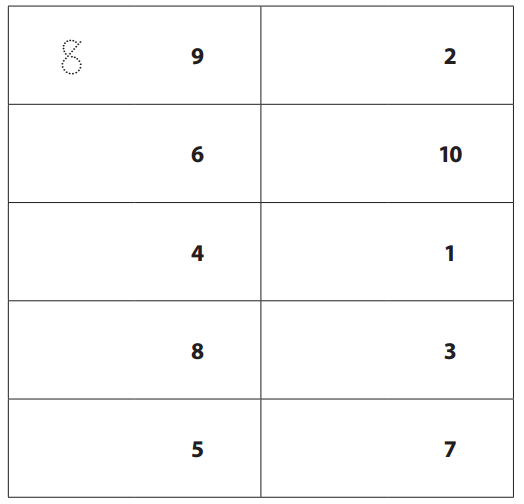
Answer:

Explanation:
The number that comes before when I am counting are written in the table as we can observe in the above image.
Challenge
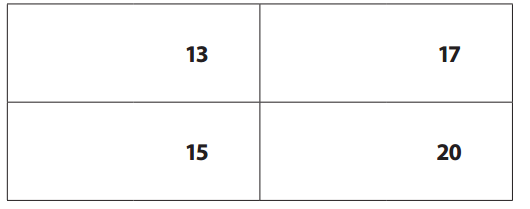
Answer:

Explanation:
The number that comes before when I am counting are written in the table as we can observe in the above image.